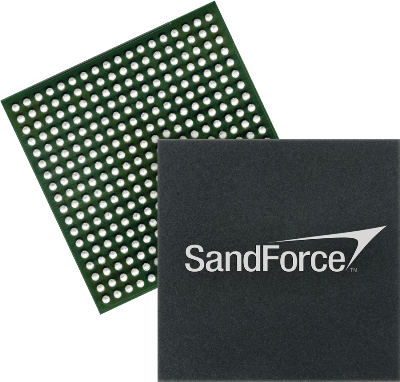SandForce has announced the company’s SSD processors have been integrated in a large-scale system benchmark recently published by IBM. This is the first to feature SSDs in the enterprise based on MLC NAND, rather than the more expensive SLC NAND.

The test system delivers 150,000 transactions per minute per CPU core running the TPC-C Online Transaction Processing benchmark, which is good for a 50% improvement over second place. Perhaps as important in the enterprise space, the benchmark delivers a 36% advantage in price/performance compared to the next leading system with the same number of CPU cores.
The system used 10.5TB of SSD capacity, which beaks down to 56 177GB SSDs using 2-bit MLC NAND and SandForce’s SF-1500 enterprise-class processor. The core system is an IBM Power 780, eight-core, two-socket system with 4.14GHz per core.
One of the main reasons SandForce is pushing the MLC drives in enterprise is the DuraClass technology they’ve included in the SF-1500 processor (controller). The highlight is DuraWrtie, which adds intelligence to better manage the writes to the SSD, thereby lengthening its productive life. With their technologies in play, SandForce believes MLC has become viable in the enterprise. Other benefits include power savings over both hard drives and SLC-based SSDs.
At the moment though this is all theoretical. IBM has to be able to deliver this system to market – at which point the enterprise can evaluate the cost vs performance equation. It also remains to be seen if MLC is a viable enterprise candidate, even with SandForce processors and technology. Time and experience will tell if this SSD solution is viable long-term.




 Amazon
Amazon